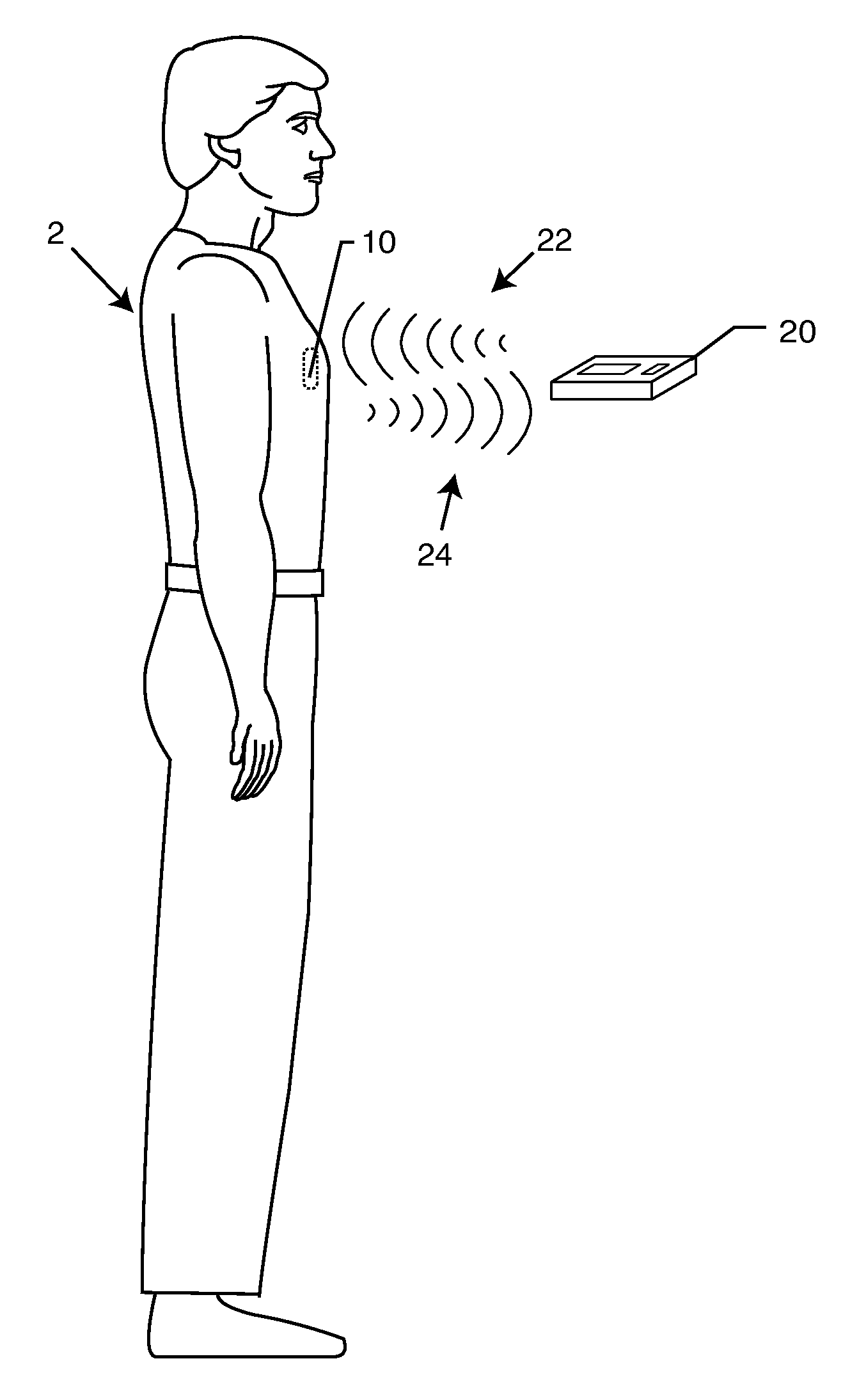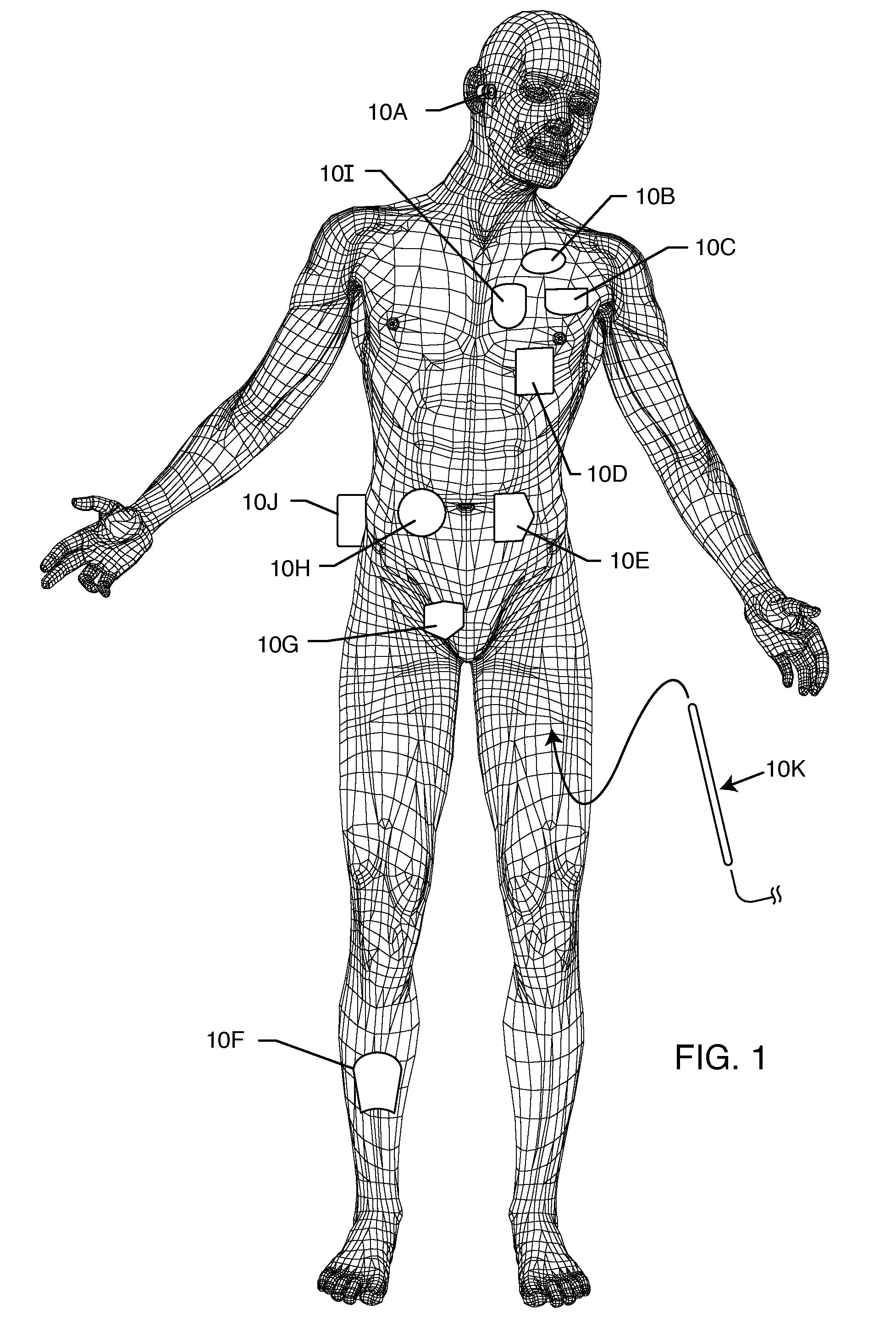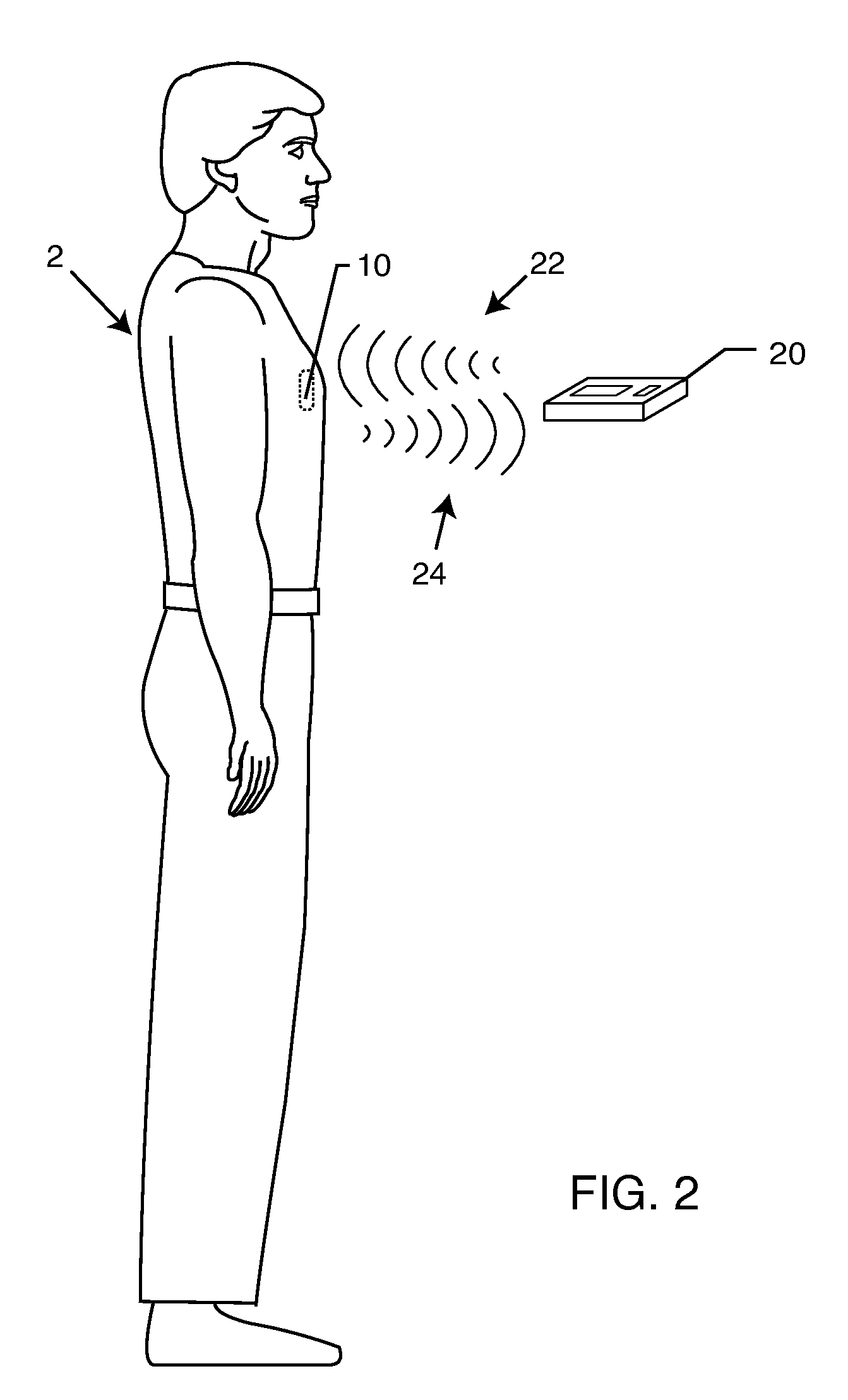Implanted lead sleeve having RFID tag
a technology rfid tags, which is applied in the field of implanted lead sleeves having rfid tags, can solve the problems of product recalls that are becoming increasingly complex and extensive, and the identification forms are often missing or not up to date, and the database and related patient cardiac rhythm management device (crmd) system cards are often incomplete and/or inaccura
- Summary
- Abstract
- Description
- Claims
- Application Information
AI Technical Summary
Benefits of technology
Problems solved by technology
Method used
Image
Examples
Embodiment Construction
[0031]As shown in the accompanying drawings, for purposes of illustration, the present invention is directed to identification of lead wires of an implantable medical device IMD. The present invention further relates to means for associating the RFID tag with the lead wire, such as an implanted lead sleeve, or a strap clip feature.
[0032]FIG. 1 is a wire formed diagram of a generic human body. Various locations are shown for active, passive, structural and other implantable and external medical devices 10 that are currently in use, and in which the present invention may find application. 10A represents a family of external and implantable hearing devices which can include the group of hearing aids, cochlear implants, piezoelectric sound bridge transducers and the like. 10B includes an entire variety of neurostimulators and brain stimulators, and hydrocephalic fluid pumps, drug and hormone insulin injection administration devices, etc. 10C shows a cardiac pacemaker which is well-known...
PUM
 Login to View More
Login to View More Abstract
Description
Claims
Application Information
 Login to View More
Login to View More - R&D
- Intellectual Property
- Life Sciences
- Materials
- Tech Scout
- Unparalleled Data Quality
- Higher Quality Content
- 60% Fewer Hallucinations
Browse by: Latest US Patents, China's latest patents, Technical Efficacy Thesaurus, Application Domain, Technology Topic, Popular Technical Reports.
© 2025 PatSnap. All rights reserved.Legal|Privacy policy|Modern Slavery Act Transparency Statement|Sitemap|About US| Contact US: help@patsnap.com



